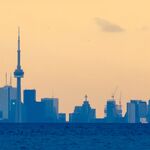44 North
Senior Member
^^Now I wasn't really saying they were, just more the fact that had the stations been designed simpler/smaller we could've possibly saved $X-million (which could otherwise have gone to improving our public realm elsewhere). I haven't exactly analyzed where the cost overruns are biting us, but are we certain they're not somewhat related to the 'lavishness' of these stations? I feel like if each station followed a similar template/standard with perhaps a smaller footprint, things may've gone smoother. Though I'm not sure on this.





